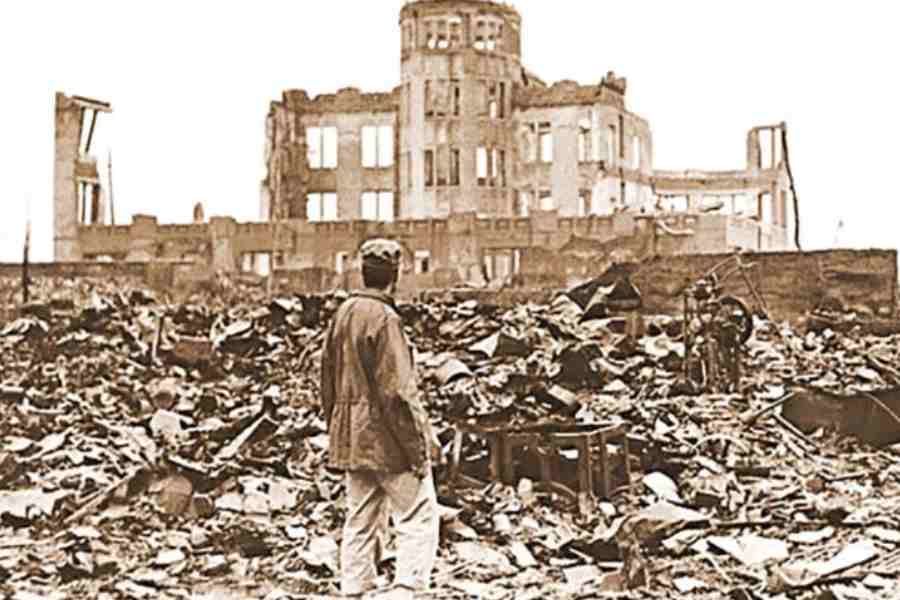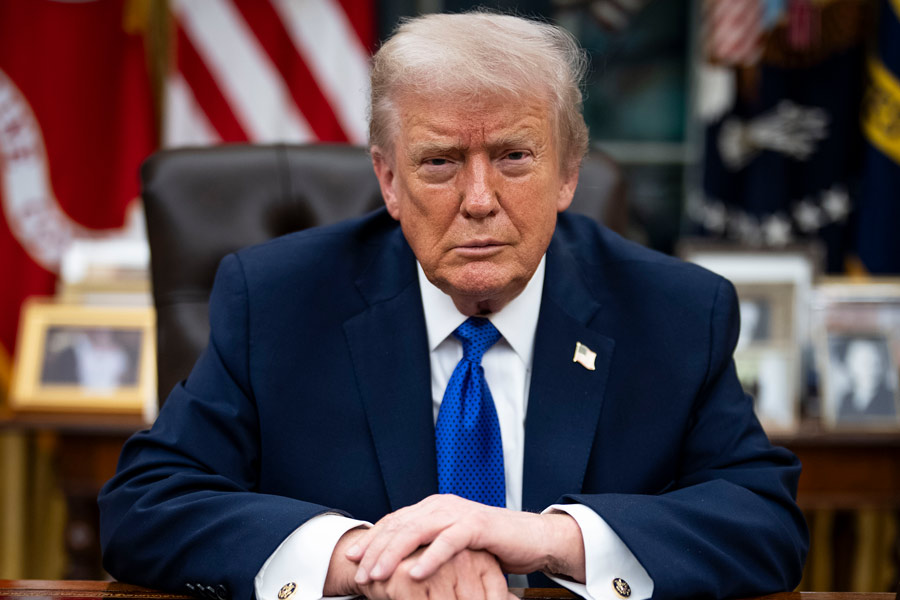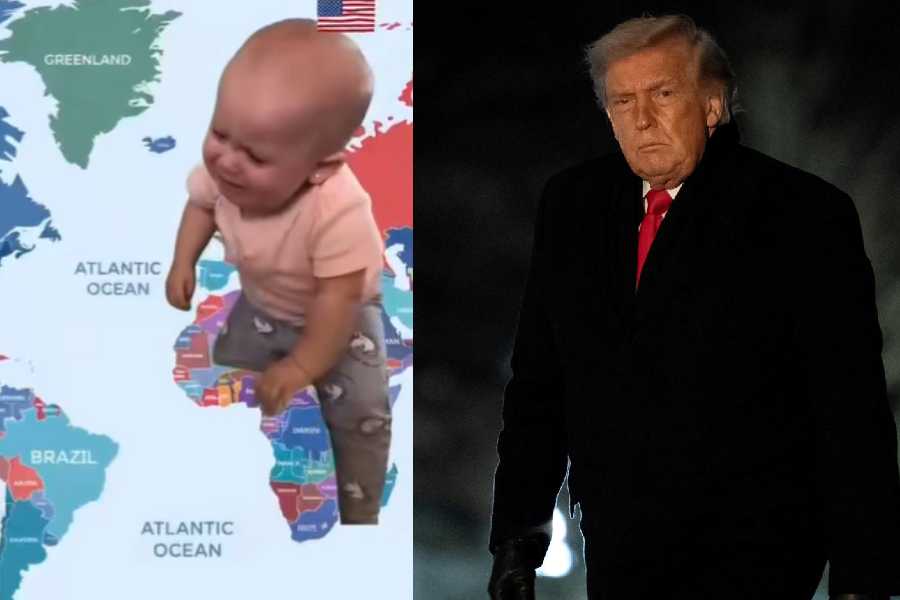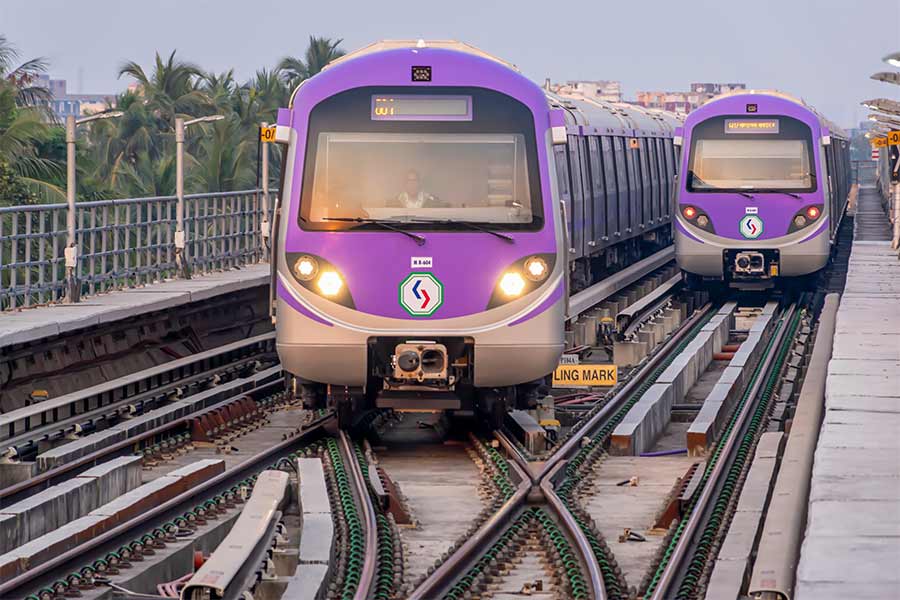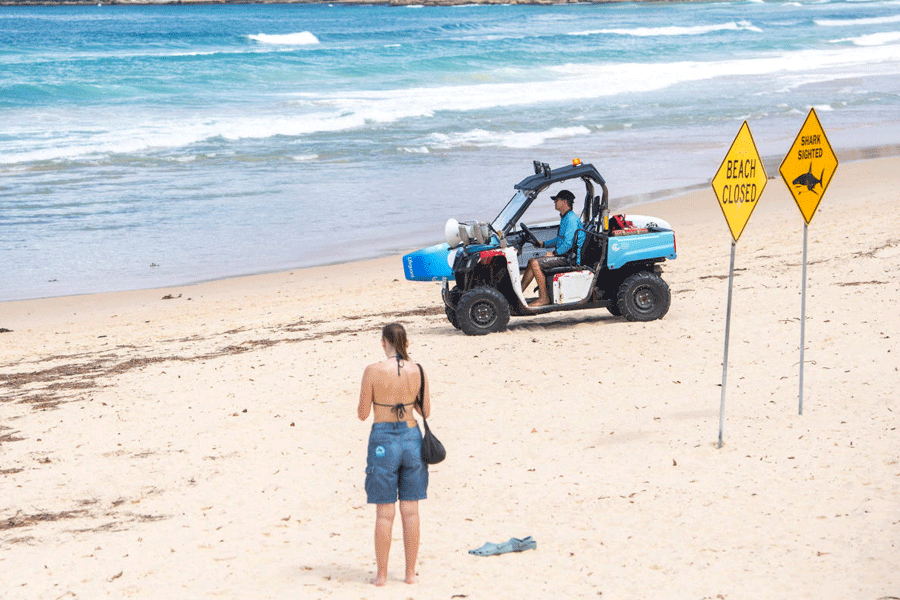A seemingly unlikely figure, that of an American theoretical physicist, has been the toast of the mainstream cinematic world this August. Oppenheimer is Christopher Nolan’s operatic take on the life and the work of Julius Robert Oppenheimer, the man who, figuratively speaking, becomes ‘death, the destroyer of worlds’ after leading the Manhattan Project that gave humanity the atomic bomb. Unsurprisingly, the film, at the time of writing, had grossed 300 million dollars in the United States of America, the first country to have nuclear blood on its hands; in the United Kingdom — the physicist had studied in Cambridge — the biopic has become the third-largest Imax release of all time; India, which had turned jubilant — twice — when the ‘Buddha smiled’, helped Oppenheimer pocket over Rs 100 crore in less than two weeks; in Japan… Japan, which is observing the 78th year of the destruction of Hiroshima and Nagasaki this August, is yet to watch the film: it is one of the several countries in the world where Nolan’s cinematic juggernaut has not rolled out — yet.
In the film, Nolan makes the still unconscientious, unrepentant Oppenheimer say, seemingly jubilantly, after ‘Little Boy’ had been detonated, “I bet the Japanese didn’t like it.” But post-apocalyptic reflections on the bombing and, subsequently, on the global politics of nuclear disarmament in Japan, a nation which, The Economist noted recently, lost an estimated 210,000 people in the twin atomic explosions and where 113,000 civilians survive with radiation exposure, have not been necessarily limited to either grief or indignation. In a blog of the Union of Concerned Scientists, a nonprofit science advocacy group, Yukiyo Kawano — born in Hiroshima — focuses only briefly on that August morning that changed Japan and, with it, the world; her eyes are set very much in the present: “This… May…” writes Yukiyo, “I was in Hiroshima… and witnessed the G7 summit… People watched as Prime Minister Kishida spoke of progress in nuclear disarmament talks.” But Yukiyo notes that the G7 leaders pledged weapons, “including depleted uranium munitions”, to Ukraine. She also mentions the Sister Parks Agreement between the Hiroshima Peace Memorial Park and the Pearl Harbor National Memorial Park in Hawaii that provided an official seal on a consensus between Japan and the US “that the war began with an (unjustified) attack on Pearl Harbor and ended with the (justified) dropping of the atomic bombs on Hiroshima and Nagasaki.”
Unlike Yukiyo, Japan’s first-generation hibakushas — those who survived Oppenheimer’s bomb — have had their eyes peeled for the past. I remember meeting Keiko Aguna, a small, wiry-framed, spirited woman, a hibakusha and a peace activist, in front of the Hiroshima Peace Memorial Park some years ago. Much of that sunlit, quiet day in Hiroshima was spent listening to Keiko reminisce about that sultry day, all those years ago, when the sky changed colour, the ground shook, the air turned putrid, and an entire city lay burning by the sea. Life, what was left of it in Hiroshima, became even harder for the hibakusha in post-War Japan. The women survivors of the atomic bomb, already battling debilitating medical conditions, were discriminated against on account of a medico-psychological backlash. There were fears that they would spread the contagion of radiation; but most tellingly, as is often the case with post-conflict patriarchies, women like Keiko, unbeknownst to them, had already been transformed into potent emblems of national humiliation. The price for their undignified existence was their silence.
From where we sat, by the towering skeletal structure of the Atomic Dome, Hiroshima’s signature landmark, Keiko and I could see solemn-faced American tourists take in the snippets of US-engineered destruction preserved as museum artefacts — matted, burnt locks of hair, a lunchbox with singed, blackened rice, a pair of slippers. Keiko did not have a word of condemnation for those visitors. But she did say that on a visit to Washington on the invitation of American peace activists, she had noticed the fetishisation of the Enola Gay — the B-29 bomber that dropped the bomb on Hiroshima — as a national treasure.
Keiko also remembered the spring of 1946. After the guns had fallen silent, Hiroshima had been awash with rumours that no vegetation would sprout in that radiation-bleached city for 75 years. Yet, that spring, tiny flower buds began to appear in Hiroshima’s gardens. Was it at this moment, one that signified resurrection, that the then young Keiko decided to break the silence on her bombed-out life?
Keiko had spoken. Yukiyo has written. These are but two voices in a vast chorus in Japan that continues to reflect on the issues of nuclear violence, justice, deterrent and reparation. But it must be remembered that the fraternity of post-apocalyptic polities is far from representative and that the world’s conscience is equally selective. Japan’s strategic realignment with the US in the new world order had been instrumental in making the hibakushas’ whispers pierce the West’s armament of triumphalism and denial. But how much does the West care for, or do we know of, when it comes to the displacement and the continuing sufferings of the indigenous people of Bikini Atoll or Enewetak, the sites that bore the brunt of the US’s fine-tuning of the fearsome hydrogen bomb? Do we even remember that this year marks yet another — the 44th — grim anniversary of the Church Rock uranium mill spill that poisoned Navajo men, women and children across New Mexico and northern Arizona? Who speaks for the Australian bushmen as they watched their skies in Maralinga and Emu Field catch fire from British nuclear fusillade? And what of the French, the high priests of égalité, raining nuclear test arsenal on the Algerian Sahara that continued even after Algeria had gained independence from France in a prolonged, bitter struggle? How many Indians, journalists included, have taken the initiative to follow up on the surge in cancers in the Thar region in the years after Pokhran I?
The post-apocalyptic voice may no longer be fettered by colonial artifice. But the ownership of that voice is of critical importance. For it to function as a sharp instrument of conscience, it must have distinct indigenous roots, owned and disseminated by people and cultures that have survived the mushroom cloud.
Would Hollywood have the courage to have a Japanese or, indeed, a Navajo man or woman direct Oppenheimer?
uddalak.mukherjee@abp.in

